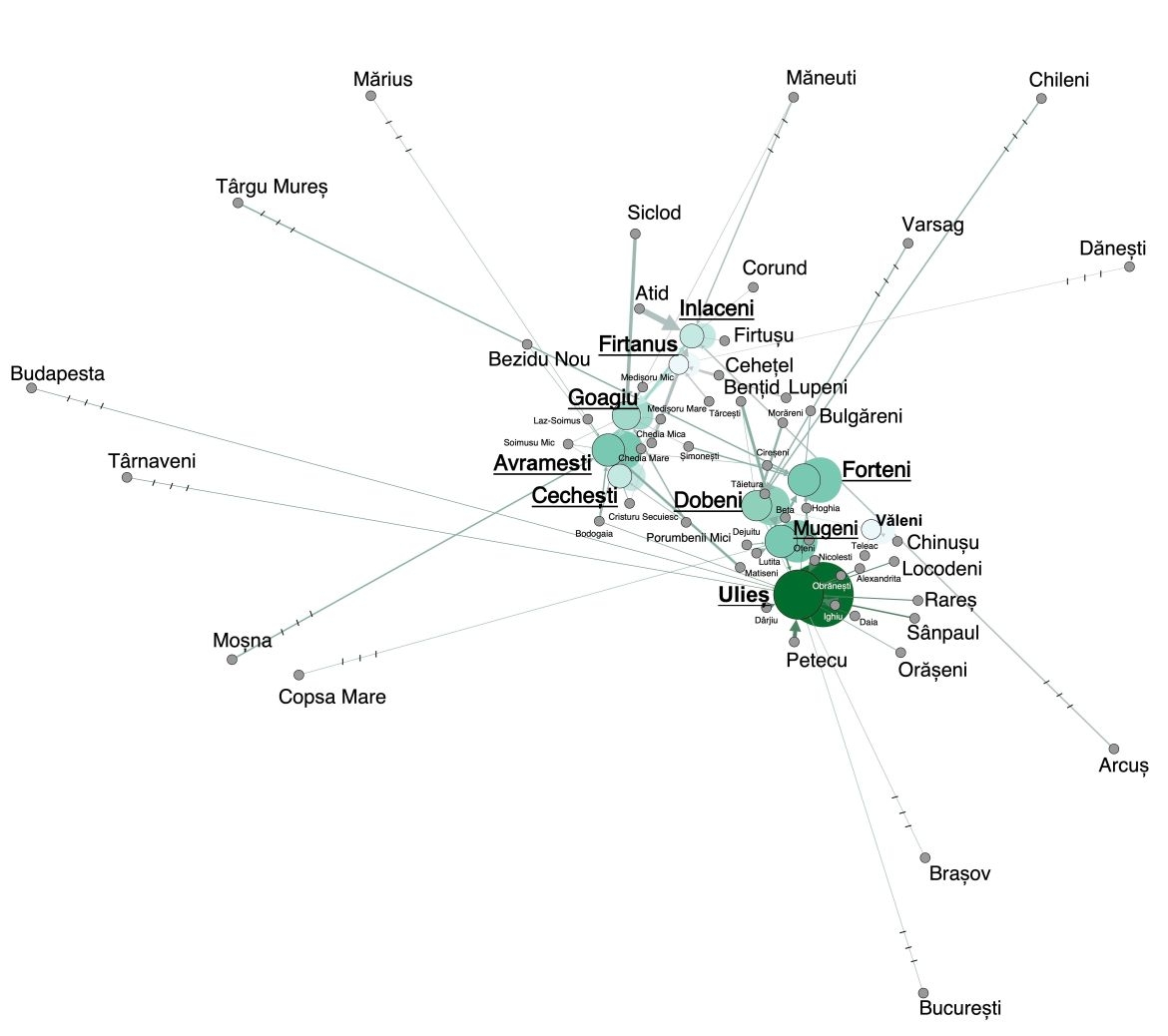’High Coverage Mitogenomes and Y-Chromosomal Typing Reveal Ancient Lineages in the Modern-Day Székely Population in Romania’, a new study by researchers from the Institute of Archaeogenomics, was published in the journal Genes (MDPI) in early January.
In this study, which was first authored by PhD student Noémi Borbély, 115 new complete mitogenomes and 92 new Y-chromosomal STR and SNP profiles from the Székely people (living in Transylvanian part of Romania) are presented by the researchers of the Institute of Archaeogenomics and their co-authors. The results of their research and the published data represent a qualitative leap compared to previous studies, as they report the first complete mitochondrial DNA sequences and detailed Y-chromosomal profiles (based on 23 short tandem repeats) from the region.
In the framework of Anna Szécsényi-Nagy’s NRDIO junior research project, those sample providers were carefully selected from villages in the vicinity of Odorheiu Secuiesc/Székelyudvarhely, whose ancestors were local and lived in the same or the nearby villages for several generations. The sample collection took place in 2019 in the villages of Inlăceni, Firtănuș, Ulieș, Mugeni, Goagiu, Avrămești, Cechești, Dobeni, Văleni and Forțeni, with the help of local pastors and István Máthé, associate professor at Sapientia University in Miercurea Ciuc. The results were evaluated using population genetic and phylogenetic methods in the context of modern and ancient populations that are either geographically or historically related to the Székelys.

Map of Europe and the Transylvanian part of Romania showing the Székely villages where the DNA samples were collected (in black).
The yellow shadings indicate the settlement areas of the Hungarian-speaking populations, including the Székelys.
Red circles indicate previously collected and published Székely datasets (Egyed et al., 2007; Tömöry et al., 2007) and the city of Odorheiu Secuiesc (Figure 1 in the study).
The history of the Székely people in the region dates back to the 12th century, and numerous scientific theories exist as to their origin. The results of the present research showed a predominantly local (i.e. East-Central and South-East European) composition of the population, with limited admixture with neighbouring populations. In both maternal (mitochondrial) and paternal (Y-chromosomal) gene pools, the authors of the paper found a high degree of heterogeneity within and between villages. Among both maternal and paternal lineages, mainly European types were identified in similar proportions, but in both cases some eastern lineages were also present.
The phylogenetic analyses confirmed the presumed eastern origin of some maternal (A+152+16362, A12a, C4a1a3, C5c1a, D4e4) and paternal (Q, R1a) lines, and in some cases they can be linked to ancient DNA data from the Migration Period (5th-9th centuries AD) and the Hungarian Conquest Period (10th century AD). The current Székely dataset completes the previous studies and is broadly in line with their observations.

Network about the local movement of the sample donors’ ancestors.
The birthplaces of the sample donors and their parents and grandparents are marked with circles and the generations are connected by a line.
If they were not born in the same place, two circles are connected, if they were born in the same village, the circle is connected to itself. It can be seen that the villages where the sampling was carried out stand out the most, indicating that most of the sample donors' ancestors lived in the locality.
The relative position of the settlements corresponds to their geographical location and is proportional to the distances (except for the more distant settlements indicated by dashed lines at the edges of the figure). The size of the circles is proportional to the number of persons from the settlement.
The figure was created in Gephi software, using ‘GeoLayout’ plugin, using latitude/longitude information of the settlements (Supplementary Figure S9 in the study).
Besides revealing present-day diversity, it is of great importance to evaluate genetic continuity or transformation between present-day and ancient populations and to trace the population history of the Székely people. To explore this, further mediaeval samples, regional genetic transects and complete genome analyses are aimed for.
The follow-up project and the next genetic study of the researchers will include samples from mediaeval Székely cemeteries from the region around Odorheiu Secuiesc as well, and will extend the findings with whole-genome analyses. The partners of the Institute of Archaeogenomics are in this project part the Institute of Archaeology (Research Centre for the Humanities), the Haáz Rezső Museum in Odorheiu Secuiesc and the Molnár István Museum in Cristuru Secuiesc.
Further information:
Link to the original announcement: https://www.mdpi.com/2073-4425/14/1/133


